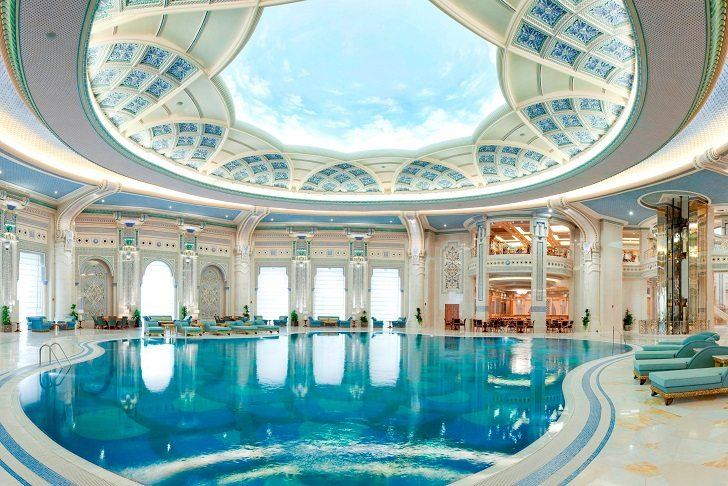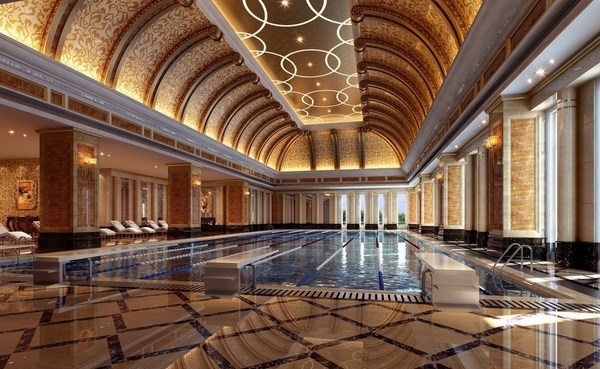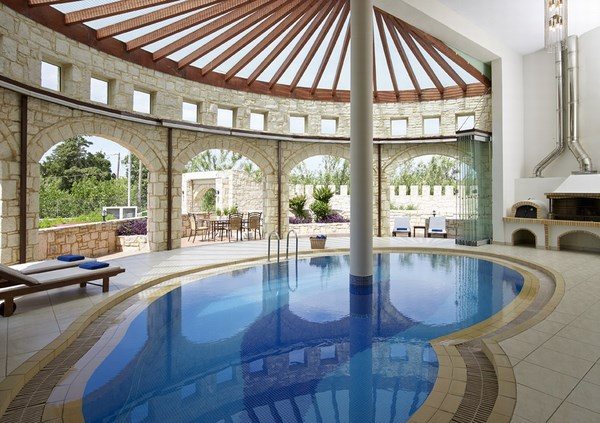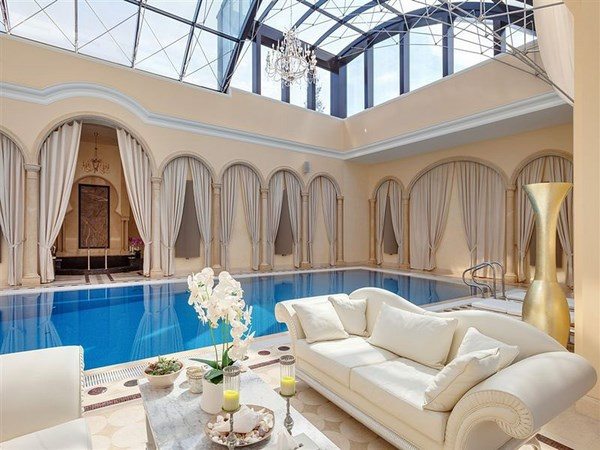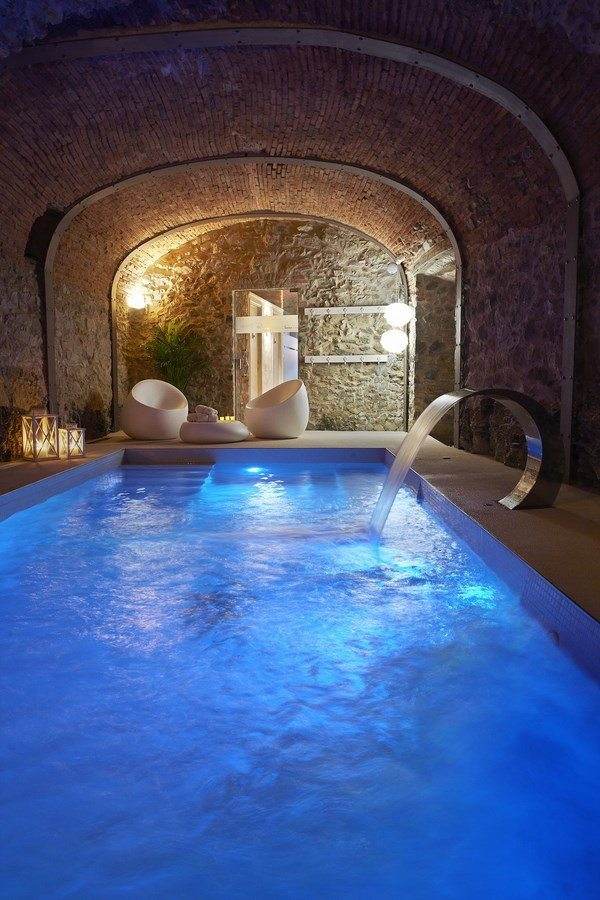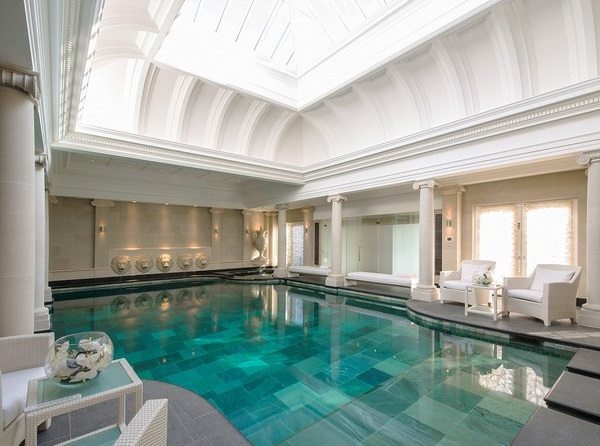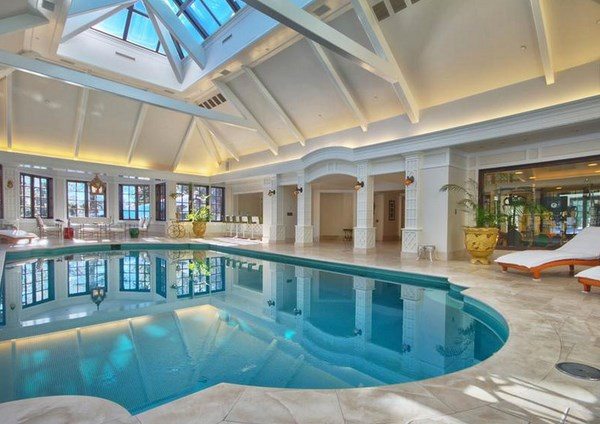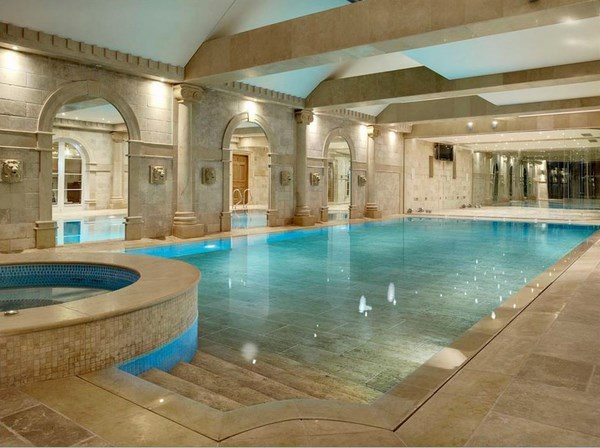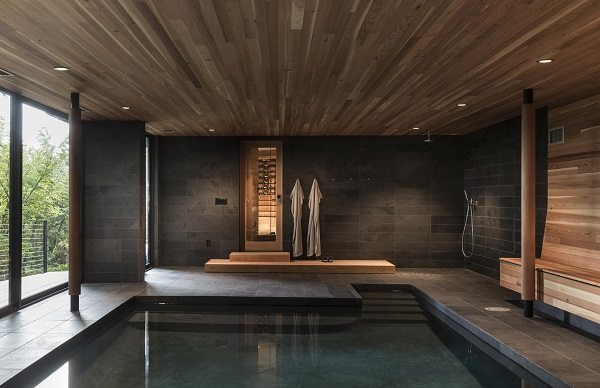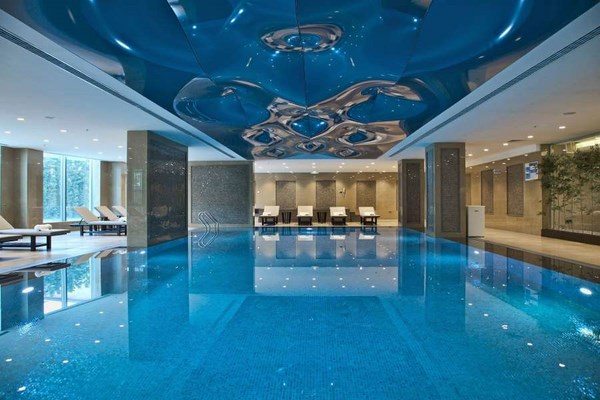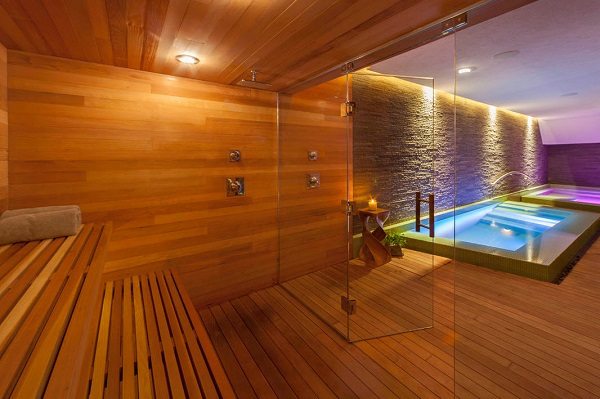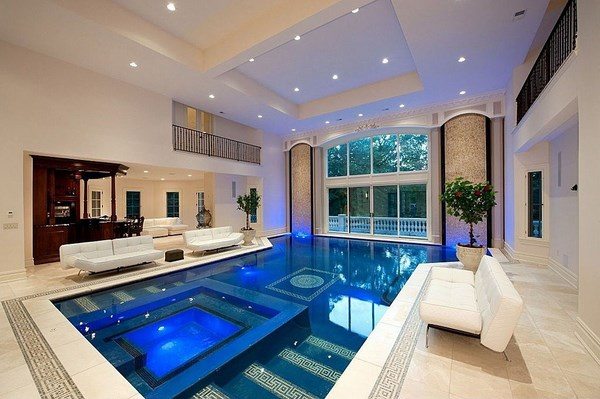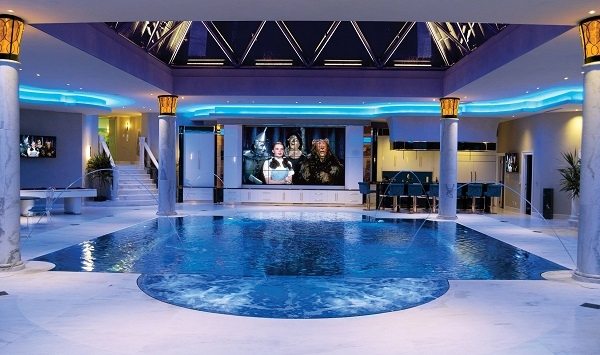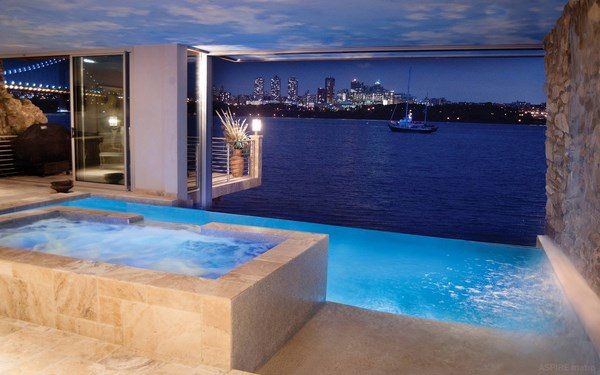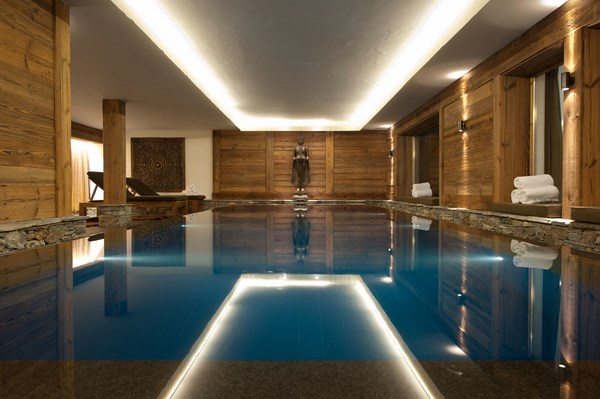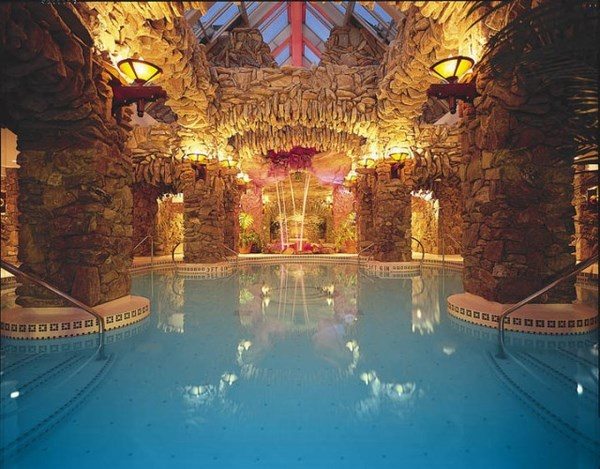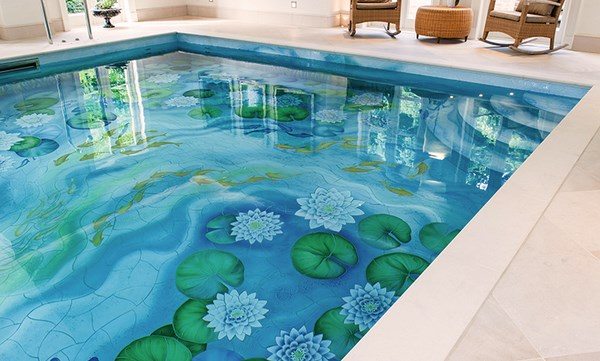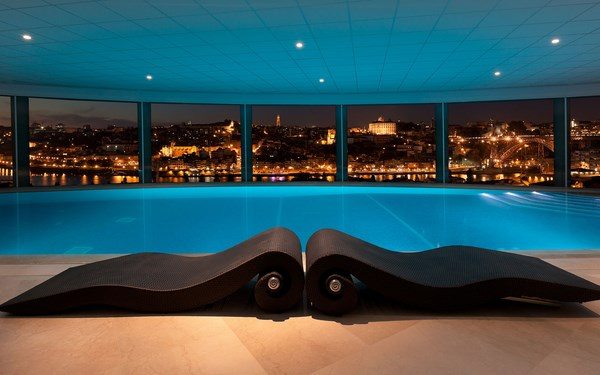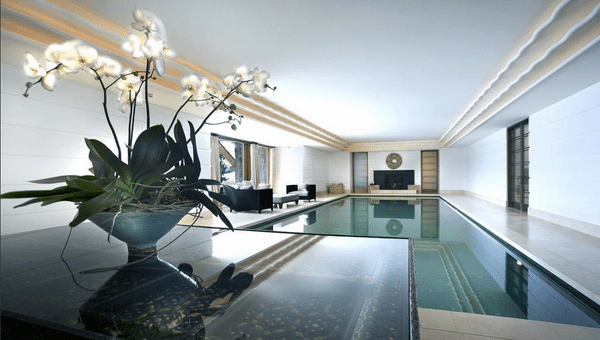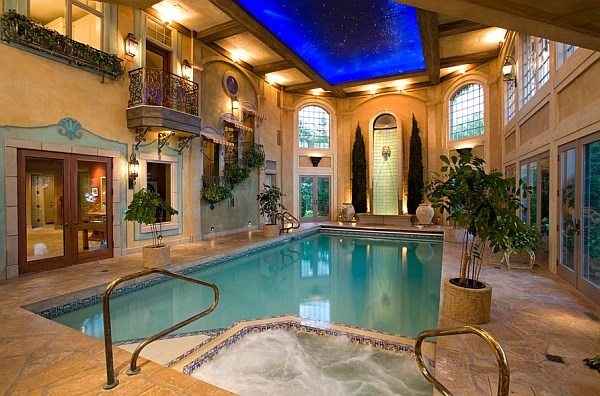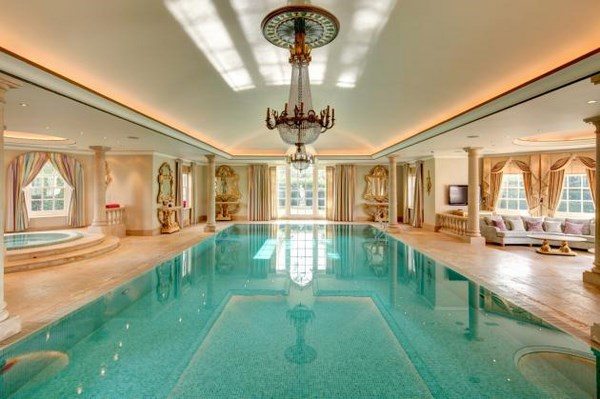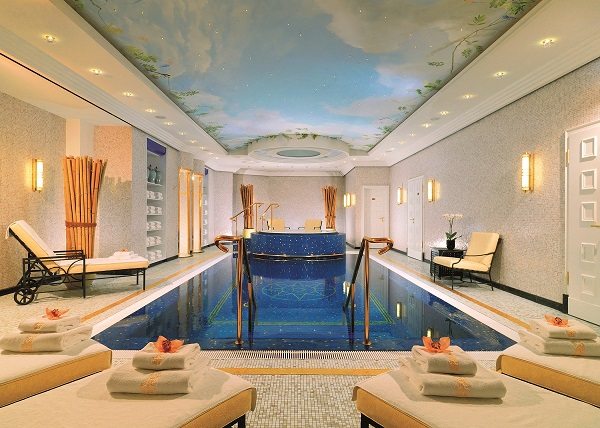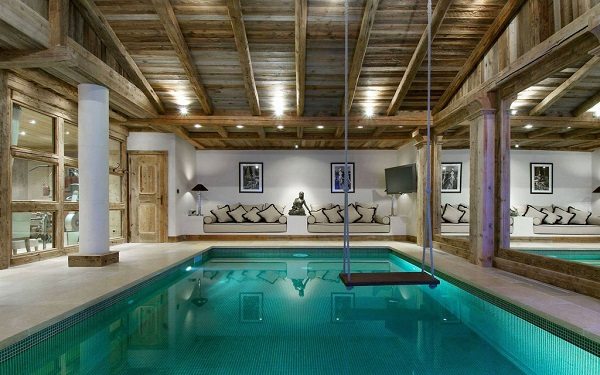An indoor swimming pool is the dream of many homeowners but before you dip into the water, you will need to make quite many decisions – where to construct the pool, which configuration to choose, which technology will be optimal, do you want additional features, what materials to choose, how to decorate and which style to choose and of course, all this has to comply with your budget. It can be really difficult to make the right choices without the advice of experienced professionals. Before the actual construction you will need to have a preliminary plan and once you have decided on the important questions, a final plan, which needs to be approved by the local authorities. It is very likely that you shall need a permit as well, so before you enjoy your indoor pool all year round, there is a lot of work to be done. One of the main questions that you need to answer and have a clear idea of would be the size, water supply, equipment, pump size, waste water disposal, construction materials, finishes, ladders and steps, handrails, lighting, ventilation, filtration, pool water features, maintenance and cleaning, water temperature controls, safety equipment, decking, decoration, etc. As you see, the construction involves numerous issues and your pool has to meet many requirements and building codes. You need to be sure whether you need permissions and what type of permissions you need to have, so it is best if you consult with your contractor.
What are the pros and cons of an indoor swimming pool?
Nowadays, having a pool is no longer considered a luxury. The decision whether to choose an indoor swimming pool or a garden pool depends on a lot of factors but both provide the opportunity for an active rest. The main advantage of indoor pools, of course, is that they can be used regardless of the weather conditions and the time of year. In addition, pool pavilions allow you to save on heating water, cleaning and preparing them for use. As a result, their owners can enjoy swimming without problems all year round. Another advantage is that the cost of water and air heating are significantly less and the loss of water due to evaporation decreases.
The water quality is increased due to the fact that it is protected from atmosphere pollution, leaves, dust, dirt, which is also important for the finishes – walls, bottom, decking, etc. Neither of these is exposed to elements, which means their lifespan will be longer and will require less maintenance. You will save on costs for winter conservation as well. In addition, an indoor pool has a lower consumption of chemicals for water treatment.
In terms of aesthetic appeal, the design options are limitless and you can make your indoor swimming pool an amazing feature of your home which will gather family and friends.
However, you will have significant construction costs as the pool, especially when it is designed as a house extension, requires a special structure which will accommodate it. You will have to install ventilation and air conditioning systems, dehumidifier and a system for heating the floors and the premises. You need to consider suitable ceiling height as it may limit which model you can choose.
We shall look at different indoor swimming pools and discuss the shapes, sizes, depth, finishing materials, decoration, furniture, etc, so that you can have useful information and determine what will suit your individual needs, taste and personal preferences.
Indoor swimming pool – what do you need to do prior construction
An indoor swimming pool is a challenge not only in terms of construction, but you have to be aware that you shall be dealing with a large body of water inside your house and take the necessary precautions to avoid any potential damages to your property.
Where to locate your indoor pool? There is not a single answer as properties differ in size, plan, layout, etc. Some people locate it in the basement, others opt for house extensions, some locate it in an unused space. Either way, you have to make sure that the house foundation is capable to hold the pool. One of the main problems that cause damages to the walls is the evaporation of water. This means that you have to consider materials that are rust and rot proof, vapor barriers, water resistant insulation on walls and ceiling, a dehumidifier and ventilating system, which are a must for any pool room and prevent mildew growth. You need to consider windows insulation as well. Experts advise to choose double or triple glazed windows which provide better insulation and reduce heating costs.
Choosing the size, shape and depth of your indoor swimming pool
This is, certainly, an important question – what size of pool to choose? There are many factors that influence the size so you need to consider them prior construction. Once your pool is ready, it is impossible to shrink or make it bigger. Here are some of the most important questions that you need to answer prior construction:
- How many people will use the pool and how often are they going to use it?
- Do you need a recreational pool or you intend to do laps?
- How much space do you want to have around the pool and what type of furniture you’d like to have?
- Do you want water features – wading area for small children, a slide, a springboard, a fountain?
- Do you plan to entertain family and friends around the pool?
How to determine the shape and depth?
When you choose the shape and depth of your indoor swimming pool, you have to answer the same questions – how the pool is going to be used, who is going to use it, etc. Nowadays, you can choose from simple geometric shapes – squares, rectangles, circles, ovals- to free form swimming pools, kidney shaped designs, etc. The available space should also be taken in consideration as you may want a huge rectangular pool, but you only have the space for a moderate size round one.
The depth of the pool will depend on the way it is used. For example, a recreational pool should have a larger shallow area with a sloped floor where small children can play safely. When you want a pool suitable for swimming laps, you need a long and straight section of about 25 meters, or a rectangular pool, and sufficient depth which will allow you not to touch the bottom while swimming and turns will be safe. An L-shaped swimming pool can combine a recreational area and an athletic area and you want to install a water slide or have a diving area, you shall need more depth. It is best to discuss the depth factor with your contractor and get an expert’s opinion. Note that free form pools require a more detailed planning and the process of their construction is more difficult, respectively, they may be more expensive.
The size, shape, depth and overall design are one of the major factors that affect the cost of the swimming pool. High end finishing materials, exclusive solutions, luxurious decorations, amenities and additions like lighting, waterfalls, fountains – all these add to the cost so it all comes to the budget. You can check with your family and friends how much they paid for their pool and get an idea of the prices in your area.
Indoor swimming pool – ventilation, heating, water circulation
As mentioned above, the ventilation system is of great significance. Most pools are equipped with a dehumidification system which prevents condensation. Heating is another major element in the design, so you need to consider a water heating system as well as air heating. There are different pool heaters and they can run on oil, electricity or gas. Experts advise that ambient temperature should be kept two to four degrees above the pool water temperature. In this way evaporation is reduced. High temperature inside the pool enclosure leads to increased evaporation and condensation on the windows. Proper deck drainage is of great importance not only for the safety but for the control of evaporation.
The circulation system is essential for the filtration and sanitation of water. There are different types of systems so it is best if you consult with an experienced contractor who will be able to give you a good advice which option is the best for your pool.
Indoor swimming pool design ideas – choosing the style and finishes
Once you have determined the size, shape, depth, you need to think of the finishing material. Nowadays, the market offers many options and each has its advantages and disadvantages and comes with a different price tag. The appearance of the pool entirely depends on the type of finish.
Plaster is the most common pool surface finish which is a mixture of Portland cement and water, and additives like marble dust or silica sand. It is the best choice when you want a classic appearance and remains the most popular choice of customers. Plaster can be white or mixed with different pigments which give a variety of color options.
Aggregate finishes are based on plaster with added pieces of quartz, granite, river stones, or glass beads. This finish gives the pool a luxurious look and come in a variety of colors, different textures which means that there are many opportunities for creative design solutions. These finishes are more resistant to chemicals and are harder compared to plaster.
Glass bead finishes are a good choice for those who want an elegant look and a 3D effect. They are the perfect choice for contemporary pool designs.
Tiles – ceramic and porcelain – are traditional, affordable and durable pool finish. The possibilities for finishing with tiles and mosaic are limited only by the imagination of the customer. The choice and color palette of this kind of decoration is huge and over time the quality of the mosaic and tiles has improved greatly so you can have the most amazing indoor swimming pool.
Glass tiles are another option which is gaining popularity due to their durability and fascinating visual aesthetics. Glass tile is non-porous, thus impervious to moisture, it does not stain or erode, and the way it magnifies light gives any pool a fantastic appearance.
Obviously, the bigger the bowl of the pool the bigger the cost, so when you are on a budget you may consider a PVC liner which is adaptable to various pool shapes. It is smooth and non slippery and waterproof, offered in a variety of colors and patterns, so you can choose a single color or a pattern mimicking mosaic tiles or any other material.
Do not forget about the most important thing – no matter how gorgeous material and color you choose, the skills and proper and adequate installation is essential so it is recommended that you entrust the finishing to professionals.
The choice of finish will determine the overall appearance of the pool and you should do it with respect to the design concept for the style. In any case, an original design should be combined with functionality, because the main purpose of the pool – to give the opportunity to swim in the water. Many homeowners can not choose the interior of the pool, and therefore it makes sense for them to hire a professional designer. Of course, you can decorate the pool by yourself and implement your own ideas. Here are some of the basic features of the most popular decor styles:
Classical decor can be distinguished by plastered walls painted with waterproof paint. Columns and pillars add to the luxurious atmosphere and high end materials. Avoid using elements made of gypsum as additional details as the material is not resistant to moisture.
Art Deco style features mosaic and ceramic tiles, reflective surfaces and mirrors. In this case, it is worthwhile to focus on noticeable light elements: chandeliers, as well as spotlights located along the perimeter of the pool.
Rustic style requires stone, wood, and plaster in the decoration of the walls. The ceiling is decorated with beams, and the color palette features mostly natural shades.
Ethic themed decors should be based on the traditions and characteristic features of the culture of a particular nation or country. For example, Japanese style is characterized with open space and minimalism, African decors with bright colors, Indian – with inscriptions and carved decor.
Contemporary designs are usually focused on the use of a wide range of finishing materials, strict lines, clear lines, elegant furniture, etc.
How to choose the color of the bowl? The color of the bowl gives the color to the water. The best option is a blue or light blue and it is not a coincidence that swimming pools in water parks, hotels, public pools are decorated in blue. White color makes the water appear cold and white pools are not as inviting as blue ones. Green is a popular shade, but if not chosen correctly, there is a danger that the water will look like a muddy swamp. Light colors like sand, beige, gold are a good choice for the trim of the pool as they add a tropical touch to the atmosphere. Some contemporary designs feature non-traditional colors – black, pink, pearly, silvery – but in the end, it all comes to personal taste and individual requirements.
Indoor swimming pool lighting ideas
Indoor swimming pool lighting, when designed properly, can give the pool a unique look. We all know that lighting has an important role in every room of the house. This also applies to indoor swimming pools. For sure, no one would like to be in a dark, poorly lit swimming pool. The main rule is that the illumination should correspond and complement the theme chosen for the design of the space. To create a good atmosphere, it is advisable to combine several different types of lighting, use different effects and evenly distribute light throughout the room. For a more traditional appearance, old chandeliers and lamps will be useful. Large glass windows and skylights are also an excellent source of natural light. LED lights, recessed lights, spot lights – there are many options to create ambient lighting which will enhance the style of the pool. For underwater lighting you should choose special fixtures which are designed for the purpose and are perfectly safe.
As you can see, an indoor swimming pool is a complex architectural structure and not a weekend DIY project. The construction requires using various machines and equipment, therefore it is important to secure access for them, to prepare engineering and ventilation systems, drainage and heating systems. Technical knowledge and expertise are a must, starting from the design process, ending with maintenance so it is recommended to work with the established companies and contractors.

